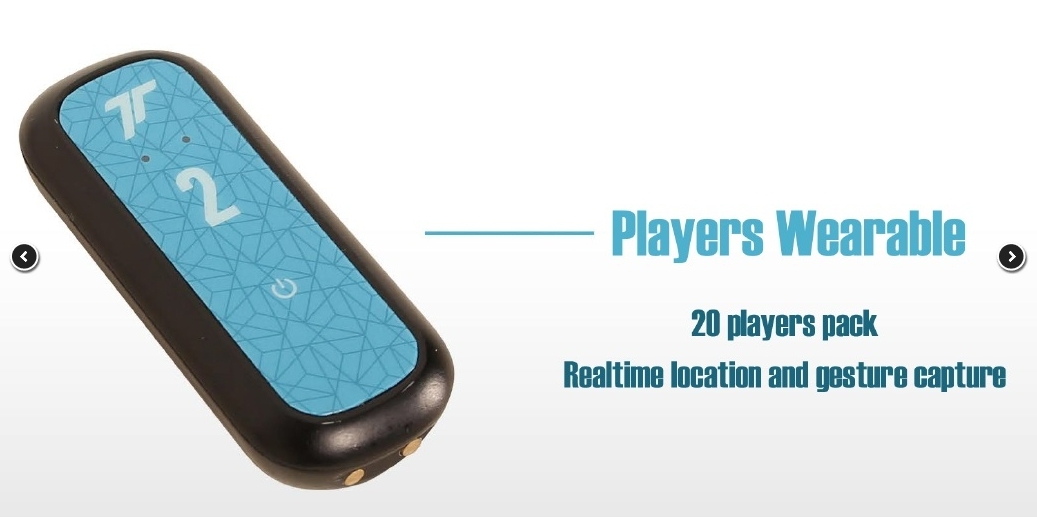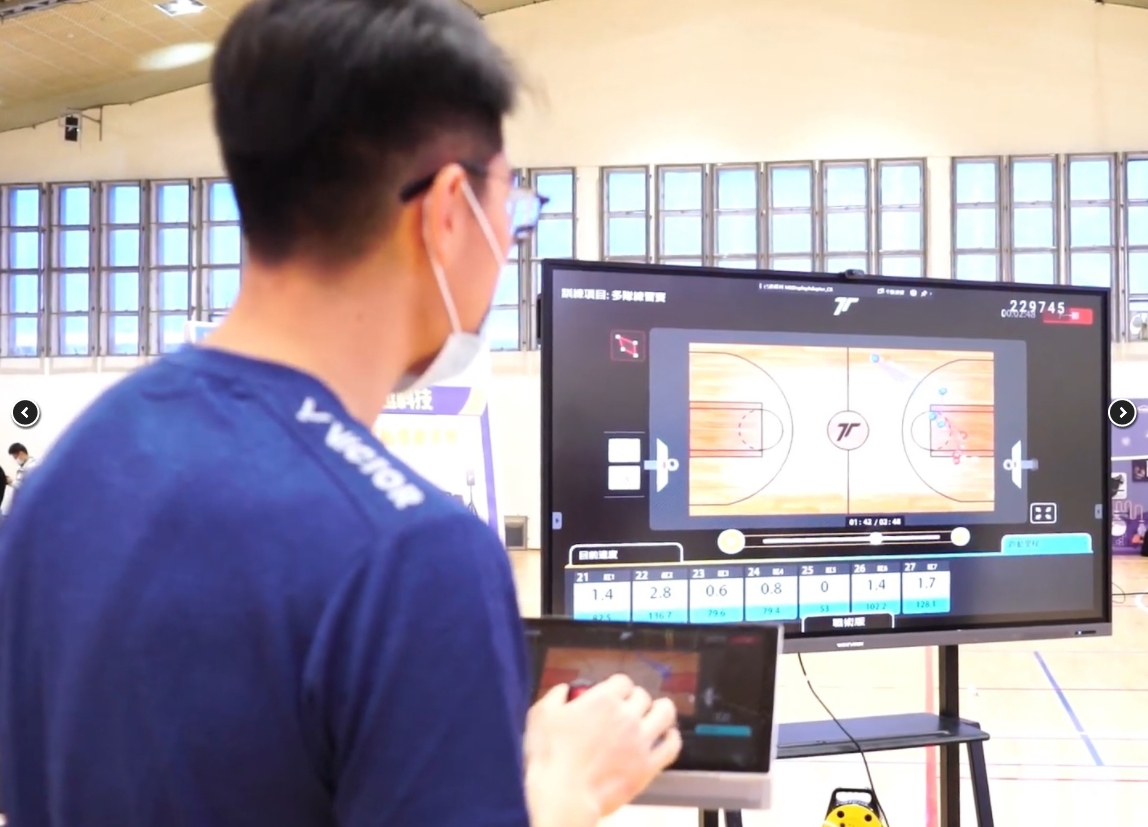ORIGINAL ARTICAL:本校公共事務中心 (2022.01.20)
A High-Efficiency Training Tool for Basketball Players — The Athlete Tracking System
With accurate shooting and agile dribbling, athletes give it their all — and behind their physical prowess lies the support of scientific training.Since early 2021, Professor Tzyy-Yuang Shiang from the Department of Athletic Performance at NTNU has led a sports science team collaborating with the NTNU women’s basketball team, using the athlete tracking system to collect on-court physical data and formulate precise training plans to enhance performance.
The Local Positioning System (LPS) works similarly to GPS, but the latter relies on satellite signals and thus cannot be used indoors. LPS, with higher precision and no such limitations, uses indoor base stations to track athletes’ movements, calculate speed and acceleration, and help coaches immediately assess player condition and make optimal decisions.
Science Meets Sports to Assist the Women’s Basketball Team
The driving force behind the athlete tracker, Professor Tzyy-Yuang Shiang, holds a Ph.D. in Mechanical Engineering from Penn State and, aside from specializing in biomechanics, is also a sports enthusiast. During a collaboration with Nike in the U.S., he discovered that engineering could be seamlessly integrated with sports science, which led him to conduct the research at Taiwan’s National Training Center upon returning home.
When talking about the origin of the system, Professor Hsiang noted that tracking athlete movement indoors had always been difficult, which prompted him to begin doing research on the LPS system.
Coincidentally, a tech company was seeking collaboration to develop sports science products, which led Professor Hsiang to apply LPS technology to player movement analysis — the athlete tracking system was born.
The research team now works closely with the NTNU women’s basketball team with the installation of four tracking units at the Gongguan campus court. Each player wears a sensor, which transmits real-time data to indoor base stations during matches. The LPS system then allows coaches to assess players’ physical load and determine whether their condition or performance has declined or improved.
Coach Liang Chia-Yin adds that beyond official games, the team plays one to two friendly matches every two weeks, and the tracking data from these games can help monitor player fatigue and fine-tune regular training intensity.
Refined Through Repeated Trials to Ensure Accurate Data Collection
The sensor is about the size of an index finger, but attaching it to players posed many challenges.
Initially, the tracker was placed at the waist, but collisions during movement caused signal delays or tracking issues. Hiding it in the undergarments led to discomfort. After extensive testing, the team found out that the signals are the most stable when they’re attach to the shoulders. Special pockets were sewn into the jerseys at the shoulder area to hold the trackers — ensuring optimal function without affecting performance.
Coach Liang stated that while current trackers only capture player data, important ball-related metrics — such as passing speed and shooting trajectory — also matter. The team is now exploring how to embed sensors in the basketball itself, which could further refine LPS applications once real-world tests are completed in the near future.
The LPS system is currently used in indoor sports, such as basketball, volleyball, badminton, tennis — and in outdoor sports like American football. Professor Hsiang also mentioned about future applications of LPS in factory layout and logistics flow, or even in public health. Though still in early development, the fusion of sports and science has already proven capable of delivering impressive results.
Written by: Tsai Fang-Ying, Lin Yun-Hsuan/ Video: Li Hsueh-Chi, Lou Li-Chia/ Edited by: Huang Le-Hsien / Proofread by: Hu Shih-Tse (English Version Powered by ChatGPT, Edited by Serena H.)

相子元教授與廠商共同開發的運動員追蹤系統感測器
(圖:台灣創明 )

LPS能從定位距離瞭解運動員移動軌跡,甚至推算出速度、
加速度等數據,協助教練立即了解球員狀態,做出最佳調度。

相子元教授表示,LPS系統未來也可用於規劃工廠人員動線,
或延伸至全民健康領域。